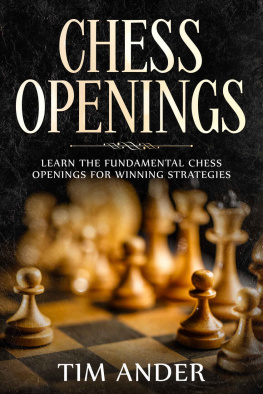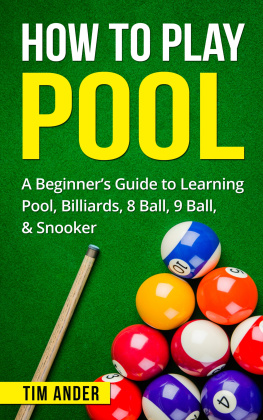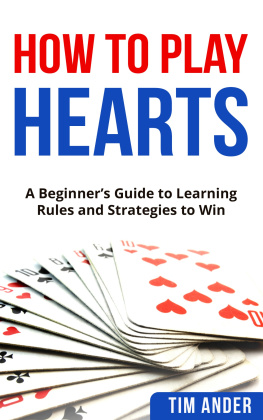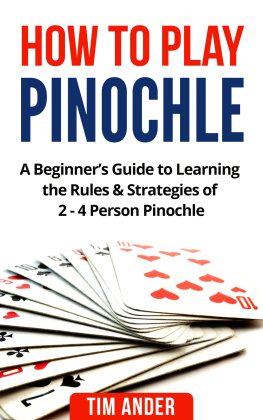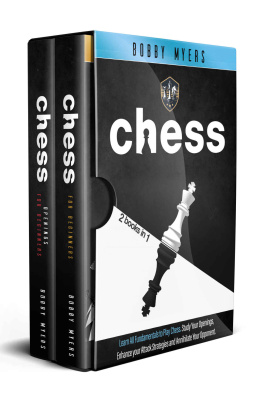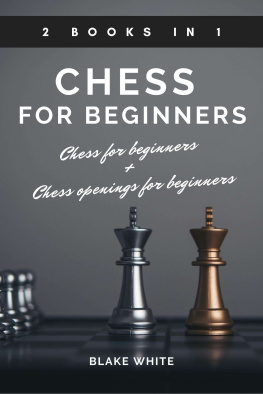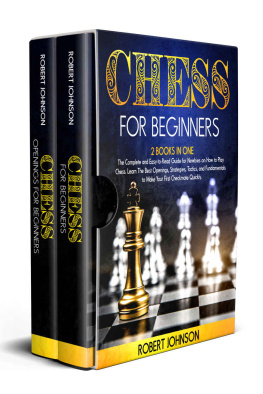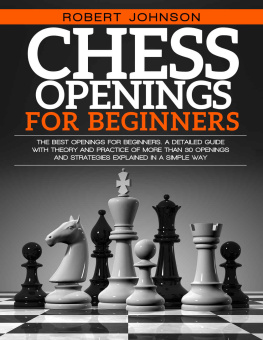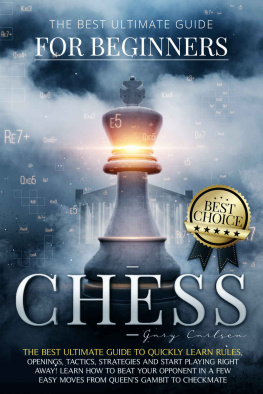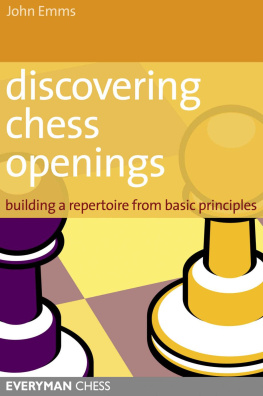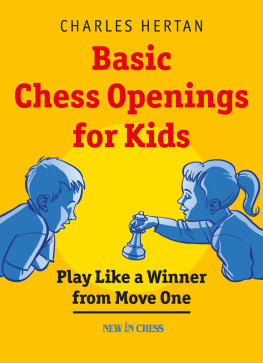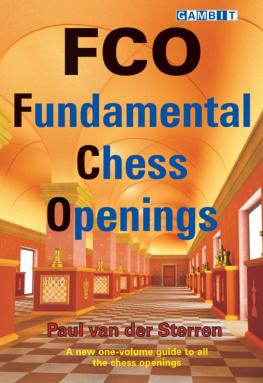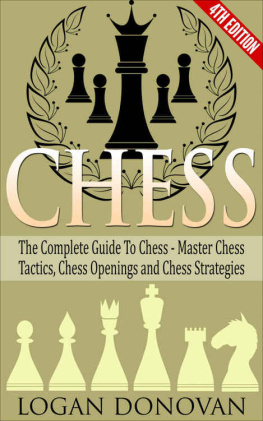CHESS OPENINGS
Learn the Fundamental Chess Openings for Winning Strategies
Text Copyright Lightbulb Publishing
All rights reserved. No part of this guide may be reproduced in any form without permission in writing from the publisher except in the case of brief quotations embodied in critical articles or reviews.
Legal & Disclaimer
The information contained in this book and its contents is not designed to replace or take the place of any form of medical or professional advice; and is not meant to replace the need for independent medical, financial, legal or other professional advice or services, as may be required. The content and information in this book has been provided for educational and entertainment purposes only.
The content and information contained in this book has been compiled from sources deemed reliable, and it is accurate to the best of the Author's knowledge, information, and belief. However, the Author cannot guarantee its accuracy and validity and cannot be held liable for any errors and/or omissions. Further, changes are periodically made to this book as and when needed. Where appropriate and/or necessary, you must consult a professional (including but not limited to your doctor, attorney, financial advisor or such other professional advisor) before using any of the suggested remedies, techniques, or information in this book.
Upon using the contents and information contained in this book, you agree to hold harmless the Author from and against any damages, costs, and expenses, including any legal fees potentially resulting from the application of any of the information provided by this book. This disclaimer applies to any loss, damages or injury caused by the use and application, whether directly or indirectly, of any advice or information presented, whether for breach of contract, tort, negligence, personal injury, criminal intent, or under any other cause of action.
You agree to accept all risks of using the information presented in this book.
You agree that by continuing to read this book, where appropriate and/or necessary, you shall consult a professional (including but not limited to your doctor, attorney, or financial advisor or such other advisor as needed) before using any of the suggested remedies, techniques, or information in this book.
Table of Contents
Introduction
You could argue that the final move in chess is the most important one. The last move will decide the game. It may take hundreds of moves to get to that final move, but all games eventually do. The moment when the king resigns or is checkmated is the goal of chess (besides our enjoyment of the complexities of the game). We all aim to win. We want to capture the king and are constantly planning how to do it. We are always focused on our end-game. But what is an end-game without a solid foundation?
You cannot hope to win in chess if you are only focused on your end-game. A great opening is the foundation of your game. A well devised opening can dictate how the game will go. A poor opening can leave you open to attacks. In short, a bad opening usually leads to a poor end-game.
Every chess professional has studied chess openings. None of them sit down at a board without knowing numerous openings and defenses against them. In an evenly matched game, one mistake in the beginning can be all it takes to lose.
When we talk about openings, we are talking about the first move, or moves, by the players in the game of chess. The moves by white are commonly called an opening, while the moves by black are known as a defense (white always plays first). I would love to list all the openings and defenses in this book, but there are too many to count. It would be impossible to learn all of them and their variations. However, some openings are more common than others.
I am going to discuss the openings that the top chess players most often choose. These openings and defenses are easy to learn and understand (until you begin to see all the variations involved). I will detail some common variations as well.
Take the time to study some chess openings, and then choose the ones that fit your game. Be prepared to mix it up in accordance with your opponent.
King's Gambit
The Kings Gambit is one of the oldest chess openings. The greatest players of all time have used this opening, and many of them have been fascinated by the versatility of it. Fischer and Spassky were particularly interested in this opening and the challenge it poses to black. The opening also provides a lot of possibilities for white.
The most common first move in chess is pawn to e4. This is quite often countered with black playing pawn to e5. With the Kings Gambit, the next move for white is pawn to f4. This gives us the following board position:

Black now has one of two options: accept the pawn or do not accept it. To accept the pawn would mean taking the pawn on f4 with their own pawn on e5. If they do not accept the pawn, some other move is made. Most players accept the gambit and take the white pawn. Black is up by a pawn, but white has opened the center of the board to attack.
The Kings Gambit is an unpredictable opening and one which can put an opponent in trouble early in the game if they do not know how to defend against it properly. The theory behind the Kings Gambit is that in order for black to stay a pawn up, the Kings side must be weakened, allowing white to build an attack down that side.
People who like open games and dynamic possibilities and lines love this opening. When a Kings Gambit is accepted, the remainder of the game can be very open.
C33 King's Gambit Accepted
The first variation of the Kings Gambit, which we are going to talk about, is the acceptance of the pawn on f4. Black takes the pawn and gives white a dilemma: should white take back the pawn quickly (which is easy) or delay taking the pawn back and play for position? You will now find yourself in this position:

C33 King's Gambit Accepted: Bishop's Gambit
The Bishops Gambit is one of the two most popular next moves by white. This allows black to develop their queen and put white in check, but by moving the knight next, white counters this and begins some good development and board position. White is also threatening the f4 square, which black should be worried about and keeping an eye on. While the knight is the most common move after the gambit is accepted, by moving the bishop, white invites black to move their queen, which will play in whites favor. Once the bishop has been developed, the board will look like this:

C36 King's Gambit Accepted: Modern Defense
The modern defense, or Abbazia defense, is a defense by black which is played after white moves their knight to f3. Black moves the pawn to d5 to threaten the pawn on e4. White will often gain the pawn back in this variation, but it gives black a good board position and threatens the white king. Both black and white have an opportunity for good development. White will often win back the pawn on f4 to open this file, while black will take central superiority. The board will look like this:


